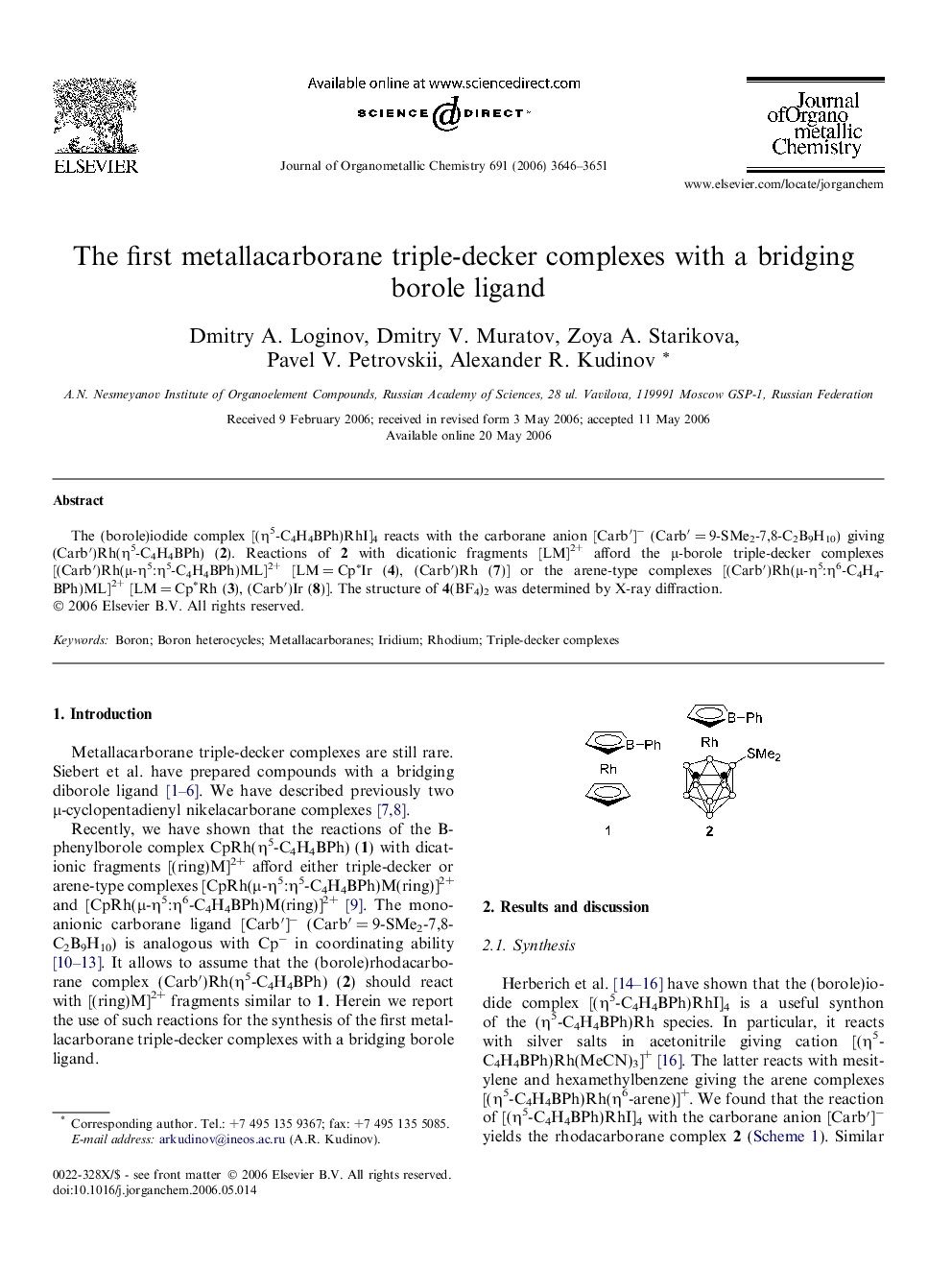| Article ID | Journal | Published Year | Pages | File Type |
|---|---|---|---|---|
| 1325781 | Journal of Organometallic Chemistry | 2006 | 6 Pages |
The (borole)iodide complex [(η5-C4H4BPh)RhI]4 reacts with the carborane anion [Carb′]− (Carb′ = 9-SMe2-7,8-C2B9H10) giving (Carb′)Rh(η5-C4H4BPh) (2). Reactions of 2 with dicationic fragments [LM]2+ afford the μ-borole triple-decker complexes [(Carb′)Rh(μ-η5:η5-C4H4BPh)ML]2+ [LM = Cp∗Ir (4), (Carb′)Rh (7)] or the arene-type complexes [(Carb′)Rh(μ-η5:η6-C4H4BPh)ML]2+ [LM = Cp∗Rh (3), (Carb′)Ir (8)]. The structure of 4(BF4)2 was determined by X-ray diffraction.
Graphical abstractThe first metallacarborane triple-decker complexes with a bridging borole ligand were prepared by stacking reactions of (borole)rhodacarborane (Carb′)Rh(η5-C4H4BPh) (Carb′ = 9-SMe2-7,8-C2B9H10) with [Cp∗Ir]2+ or [(Carb′)Rh]2+ fragments.Figure optionsDownload full-size imageDownload as PowerPoint slide
